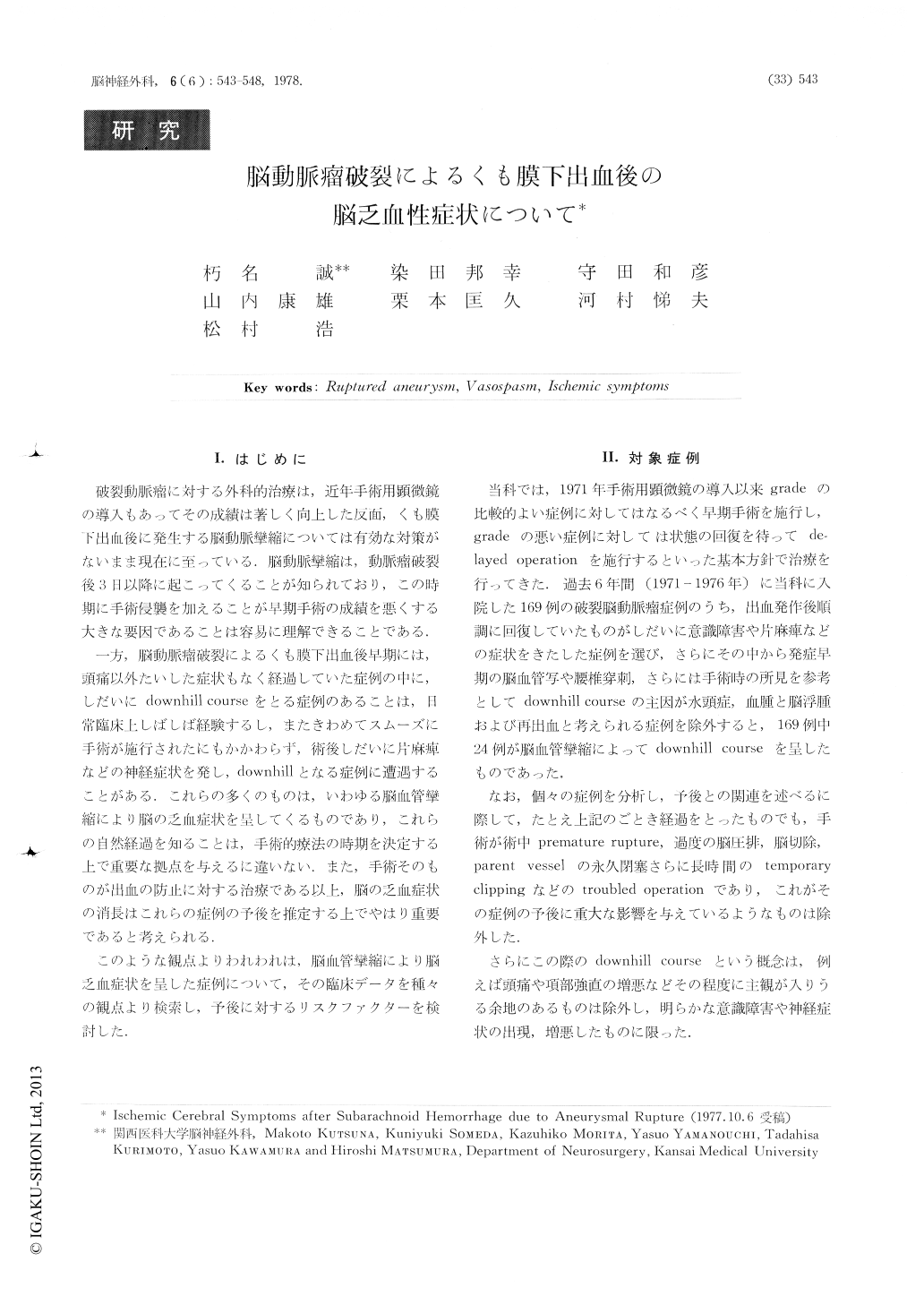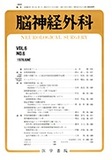Japanese
English
- 有料閲覧
- Abstract 文献概要
- 1ページ目 Look Inside
Ⅰ.はじめに
破裂動脈瘤に対する外科的治療は,近年手術用顕微鏡の導入もあってその成績は著しく向上した反面,くも膜下出血後に発生する脳動脈攣縮については有効な対策がないまま現在に至っている.脳動脈攣縮は,動脈瘤破裂後3日以降に起こってくることが知られており,この時期に手術侵襲を加えることが早期手術の成績を悪くする大きな要因であることは容易に理解できることである.
一方,脳動脈瘤破裂によるくも膜下出血後早期には,頭痛以外たいした症状もなく経過していた症例の中に,しだいにdownhill courseをとる症例のあることは,日常臨床上しばしば経験するし,またきわめてスムーズに手術が施行されたにもかかわらず,術後しだいに片麻痺などの神経症状を発し,downhillとなる症例に遭遇することがある.これらの多くのものは,いわゆる脳血管攣縮により脳の乏血症状を呈してくるものであり,これらの自然経過を知ることは,手術的療法の時期を決定する上で重要な拠点を与えるに違いない.また,手術そのものが出血の防止に対する治療である以上,脳の乏血症状の消長はこれらの症例の予後を推定する上でやはり重要であると考えられる.
Among 169 patients treated at our clinic during past six years there were twenty-four cases (14 per cent) in which cerebral ischemic symptoms gradually developed after full recovery from SAH due to aneurysmal rupture.
Duration from the aneurysmal rupture to the onset of ischemic symptoms varied from four days to fourteen days (8 days on average). As the initial symptoms hemiparesis and disturbance of consciousness (18 and 14. respectively) were two major symptoms, and those who showed disturbance of consciousness had more grave prognosis than those with hemiparesis.

Copyright © 1978, Igaku-Shoin Ltd. All rights reserved.


